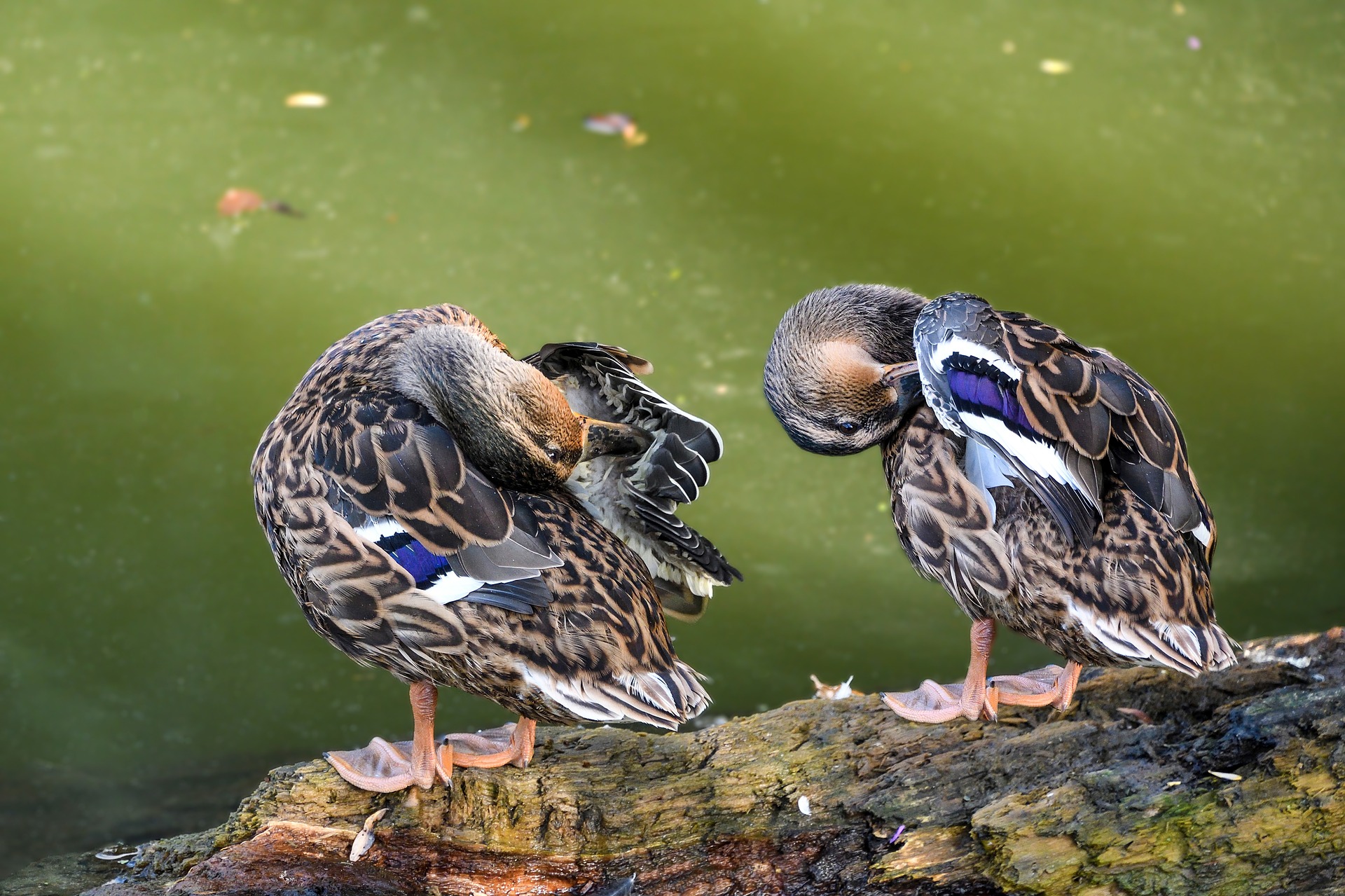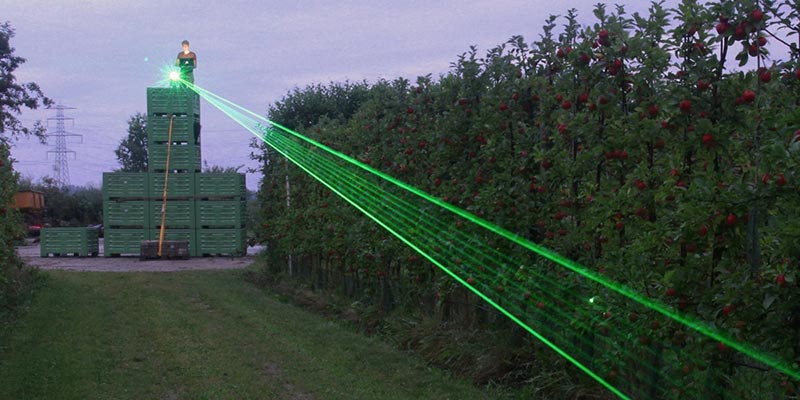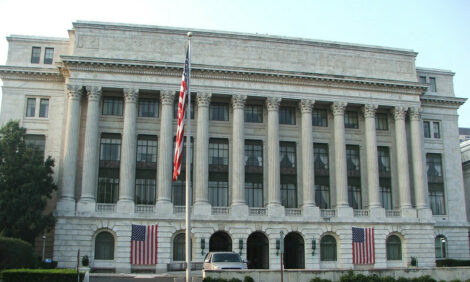



New research shows that lasers can deter wild waterfowl from areas with free-range poultry
Interactions between wild waterfowl and poultry can be potential sources of avian influenza, but Dutch researchers found that deploying a laser can prevent almost all of these interactions.This has been demonstrated in a study, part of a 1Health4Food sub-project, conducted by Wageningen Bioveterinary Research (WBVR) in Lelystad.
In a previous study, WBVR researchers had discovered that mallards – an avian flu high-risk species – visit the free-range area of a laying hen farm almost exclusively between sunset and sunrise. This was especially the case in the period of November to February, which is the highest risk period for avian influenza due to wild bird migration. The regular presence of wild waterfowl (especially ducks and geese) in the free-range area increases the risk of exposure of chickens to the avian flu virus. Wild water birds are known to be a natural reservoir of avian flu viruses. Poultry most likely become infected through contact with faeces from wild waterfowl (migratory birds in transit and/or overwintering birds) on the ground in the free-range area or by drinking contaminated water.

Lasers have been used for some time in various parts of the world at airports, landfills, oil rigs and fruit orchards to repel wild birds. The moving laser light frightens wild birds, so they fly away and stay away due to their memory of the experience. But the effect of laser light on keeping wild waterfowl away from poultry farms had not been scientifically investigated before.
For the WBVR study, which took place in the winter of 2019-2020, a laser was installed on a 6-metre-high mast in part of the free-range area that was directly connected to the barn (study area). In that part (about 1.5 ha in area), eight wide-angle video cameras were installed on 4m high poles to record visits of wild birds. This laying hen farm has regularly been infected with avian influenza in the past. During the winter, the laying hens were present during the day in the free-range area between 10 am and 5 pm. When they were inside the barn, between 5 pm and 10 am, the study area was laser-beamed. During the day, between 10 am and 5 pm, grass pastures (part of the free-range area) surrounding the study area was laser-beamed. Visits of wild birds to the study area were recorded for one month without the laser, followed by one month with the laser.
Results
Armin Elbers, an epidemiologist at WBVR and project leader of the study, explains: “Without the laser, several mallards came to visit the range between sunset and sunrise on a daily basis. In the range they look for food and swim in puddles of water that are formed during the winter period by abundant rainfall. While swimming in the puddles, the ducks may defecate. During the day, the chickens in the outdoor area drink the same water, as we saw in the video camera images. In the cold winter period, the bird flu virus can survive in such water for a long time.”
When the laser was used, almost no wild ducks visited the range (99.7% prevention). In addition, visits of other wild birds to the range between sunrise and 10 am were significantly reduced (> 96% prevention) by the laser. “When the laser was not in use in the study area, many wild geese visited the surrounding grass pastures during the day. When the laser was being used in the surrounding pastures, the pastures were ‘swept clean’ during the day, and geese were no longer present in the laser-beamed area. The poultry farmer indicated that grazing damage due to the geese presence was negligible when the laser was used”, says Elbers.

Future perspective
“For free-range poultry farms located in high-risk avian flu areas, which had repeated introductions of avian flu virus in the past, we believe that a laser could be helpful as a preventive measure to keep wild birds away from the farm during the high-risk period (October to March). Poultry farms with strictly indoor accommodation have also been infected with avian influenza in the past due to their location near wetlands. Using a laser during the high-risk period could offer a solution to this problem too by keeping wild waterfowl away from the vicinity of the barn”, Elbers speculates. It is clear that infected wild waterfowl can contaminate the surroundings of a poultry barn, but how the virus gets into the barn is still unknown. This is being investigated as part of a new public-private partnership (PPP): Biosecurity on and around the poultry farm.
Wild waterfowl such as wild ducks and geese come to outdoor areas and pastures around poultry farms foraging for food and can cause grazing damage. However, such wild birds can also be infected with avian flu virus, and contaminate the free-range area and environment of poultry farms with their faeces.
The research carried out by WBVR shows that the use of the laser used in this investigation can greatly reduce the visit of these waterfowl to the free-range area and surroundings of poultry farms.
Dutch legislation regarding the use of lasers
The Nature Conservation Act contains a number of prohibitions, such as the prohibition to deliberately disturb birds in the Birds Directive. The Provincial Executive and the Provincial Council may grant an exemption from prohibitions as referred to in the Nature Conservation Act with regard to birds of designated species. To be allowed to deter birds, for example with a laser, an exemption from the province is therefore required. The Nature Conservation Regulation also contains a number of exemptions for land users for the control of species that cause damage throughout the country
Steinar Henskes, founder of the Bird Control Group (producer of the laser) adds:
“This research provides interesting insights for new uses of our AVIX Autonomic laser systems. I advise poultry farmers that are interested in using the lasers to consult the Bij12 Prevention Kits. BIJ12 is the implementing body for prevention of wildlife damage on behalf of the provinces.”
The study into the effect of a laser on visits by wild birds to the free-range area of a laying hen farm is part of the 1Health4Food project Fight Flu, a PPP funded by the poultry sector (AVINED) and the Ministry of Agriculture, Nature and Food Quality. The laser study is an important action point in the roadmap "Strategic approach to avian flu", an initiative of the poultry sector, the Ministry of Agriculture, Nature and Food Quality and the Dutch Society for the Protection of Animals.









